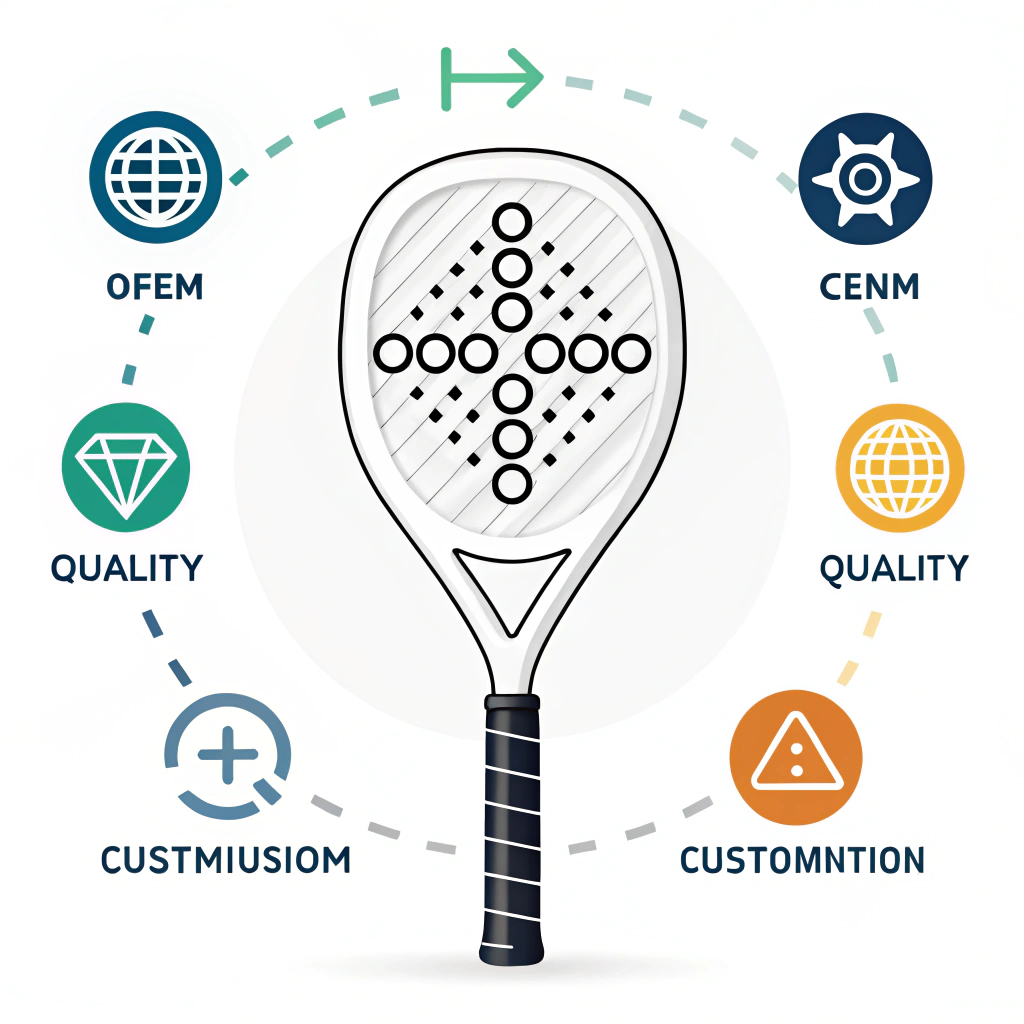Quick Answer: Building a competitive padel racket brand through OEM1 involves partnering with a reputable manufacturer, choosing the right materials and customization options, and ensuring quality control and efficient supply chain management. By addressing design, production, and logistical challenges from the start, companies can scale quickly and differentiate themselves in a competitive market.
In today’s highly competitive sports equipment market, establishing a strong padel brand requires more than just an attractive design. For companies looking to outsource production, partnering with an experienced OEM padel racket manufacturer is the key to success. This article outlines the essential needs for building a padel racket brand through OEM, focusing on technical precision, material options, customization flexibility2, and supply chain efficiency. With clear insights and actionable recommendations, procurement managers and brand strategists can make informed decisions that drive their brand forward.
OEM (Original Equipment Manufacturer) partnerships allow brands to leverage advanced production techniques and industry expertise. Working with a qualified OEM partner means every detail—from materials to production timelines—is managed to meet strict quality standards. For instance, companies like NEX Padel have mastered the art of high-performance racket construction by using techniques such as fiber reinforcement with 3k, 12k, and 18k carbon fibers3, ensuring enhanced durability and optimal playability.
The OEM approach provides flexibility for customization. Brands can choose from various racket shapes (Diamond, Round, and Teardrop) and even request full custom designs. Additionally, the ability to customize hand grips and logos can significantly support a brand’s image and market differentiation.
One of the foremost requirements for a padel racket is the selection of high-quality materials. Options include:
- Glass Fiber: Offers flexibility and cost efficiency.
- Carbon Fiber (3k, 12k, 18k): These are crucial for high-performance rackets, ensuring light weight, precision, and improved durability.
- Custom components such as hand grips and racket covers, where custom logos or brand messages add a personal touch.
A detailed table below summarizes the material options and customization points:
| Factor | Description | Recommendations |
|---|---|---|
| Material Type | Options include glass fiber and various grades of carbon fiber (3k, 12k, 18k) | High-performance brands should lean towards higher grade carbon fibers for durability and precision. |
| Racket Shape | Available shapes include Diamond, Round, and Teardrop. | Decide on the shape based on playing style and market positioning. |
| Custom Branding | Custom prints, logo placement, and color customizations on the racket body, hand grip, and cover. | Ensure consistent branding across all customizable elements. |
| Prototyping Speed | The timeframe from sample creation to final product. | Partner with a manufacturer capable of rapid prototyping and adjustments. |
Integrating these factors defines the overall product quality and customer satisfaction. Brands must decide on the right balance between innovation and proven design principles.
To help brands stand out, customization is imperative. Customization extends beyond the aesthetic to performance-oriented features. For example:
- Custom Racket Shapes: Beyond the standard Diamond, Round, and Teardrop forms, many OEM manufacturers offer fully bespoke racket designs. This adaptability allows brands to deliver products that cater to various playing styles and preferences.
- Custom Printed Logos and Colors: These are not just visual enhancements but are critical for establishing and reinforcing brand identity. Customizing hand grips and replaceable parts like the racket’s top cover offers an added layer of personalization for end users.
- Rapid Prototyping4: Speed to market is vital. An OEM partner with rapid prototyping capabilities can quickly iterate on designs, reducing time from concept to market launch. This agile approach is essential for responding to market trends and consumer feedback.
Each manufacturer has its strengths. When evaluating potential OEM partners, consider their track record in successful design customizations and their production turnaround times. Look for partners who consciously balance innovation with practical production constraints.
Ensuring Quality Control and Supply Chain Management5
Without stringent quality control, even the best design can fall short in performance. For sports equipment like padel rackets, manufacturing precision is non-negotiable. Key quality assurance measures include:
- Material Consistency: Using high-grade carbon fibers and ensuring a consistent quality of glass fiber is crucial. This consistency guarantees that each product meets the same high standards.
- Advanced Production Techniques: Manufacturers employ advanced techniques such as precision molding, automated lamination, and rigorous stress testing to sustain quality.
- Supply Chain Efficiency: Efficient logistics are pivotal. Skilled OEM partners not only produce high-quality products but also manage timely deliveries. This is particularly important in a high-velocity market where delays can result in lost opportunities.
To illustrate these points, consider the following checklist that brands should use when evaluating OEM partners:
| Quality Aspect | Why It Matters | Evaluation Criteria |
|---|---|---|
| Material Consistency | Ensures uniform product performance and durability | Testing protocols and supplier quality certifications |
| Production Techniques | Impacts product precision; critical for sports performance | Use of modern, automated production systems |
| Supply Chain Efficiency | Timely delivery impacts market competitiveness | Historical delivery performance and logistic partnerships |
Adopting a strategic approach to quality control and logistics therefore becomes a cornerstone for building a successful padel brand.
The padel market is characterized by rapid trends and seasonality. Therefore, brands require OEM partners who can adapt production schedules at short notice. Expedited prototyping and production can make all the difference. Essential considerations include:
- Short Turnaround Times: Rapid sampling and prototyping allow companies to make quick market decisions. Manufacturers with a reputation for expedited processes are ideal.
- Scalable Production Capacity: As demand grows, the ability to scale production without compromising quality is crucial.
- Efficient Communication: Open channels between the brand and the manufacturer help quickly resolve design problems or production glitches.
In a real-world example, a well-known sports brand managed to cut its product launch cycle by 30% by partnering with an OEM that offered streamlined communication and fast turnaround times. Such case studies underscore the benefits of aligning production speed with strategic brand objectives.
When making an OEM decision, a thorough evaluation should include several strategic elements:
-
Experience and Reputation: Look for manufacturers with a proven track record. NEX Padel, for instance, has built strong relationships with renowned brands such as Hirostar, Reebok, and Starvie. Their expertise in advanced production techniques, particularly with various carbon fiber grades, reinforces their reputation in the market.
-
Customization Flexibility: Not every brand wants the same design. The ability to offer fully customizable options sets a manufacturer apart. Brands must evaluate if the OEM partner can meet their customization needs—from shape to logo placement—and whether they can also offer variants like custom padel balls with specific wool compositions (45% or 57% wool) and pressurized packaging for optimal performance.
-
Technical Support and Innovation: OEM partners should provide technical insights during the design and production stages. Their ability to suggest new materials or production techniques based on current market trends can be invaluable. Expertise in converting custom designs to high-performance products defines a key competitive advantage.
-
Competitive Pricing and Delivery: Finally, successful OEM partnerships must offer competitive pricing without sacrificing quality. Transparent cost structures and reliable delivery schedules enable brands to plan their inventory and marketing strategies more effectively.
A strategic partnership is not merely transactional—it is a collaborative arrangement that evolves with market demands and technological advancements.
Consider a brand strategist at a sporting goods company aiming to penetrate the European padel market. They identified the need to achieve differentiation in a market saturated with generic products. Here is how the approach unfolded:
-
Step 1: Market Research and Planning
The strategists analyzed consumer preferences and industry trends. Their research indicated a growing demand for custom padel rackets with personalized design elements and advanced materials for enhanced performance. -
Step 2: Selecting an OEM Partner
After evaluating several manufacturers, they partnered with an OEM known for superior custom branding and expedited prototyping. The manufacturer’s ability to incorporate various carbon fiber types and produce customized shapes helped the brand achieve a unique edge. -
Step 3: Collaborative Design and Production
The brand worked closely with the OEM’s technical team. They opted for a round racket shape coupled with dynamic custom prints, ensuring a balance between performance and market appeal. This collaborative process streamlined the design phase and led to a high-quality prototype within weeks. -
Step 4: Quality Assurance and Supply Chain Coordination
The OEM’s rigorous quality checks and robust supply chain management allowed the brand to enter the market with confidence. Consistent product quality and timely delivery bolstered the brand’s reputation among retailers and consumers alike. -
Step 5: Market Launch and Feedback Loop
With the product successfully launched, continuous feedback was collected, prompting iterative improvements in subsequent batches.
This case study highlights that partnering with the right OEM is instrumental for a brand’s success. It shows how strategic planning, quality production, and market responsiveness can create a competitive padel racket brand.
Building a padel racket brand through OEM is a multifaceted process that hinges on material quality, customization capabilities, production speed, and robust supply chain logistics. By selecting a partner with proven technical expertise and flexible production capacity, companies can effectively navigate the challenges of a competitive sports market. The essential needs include:
• Choosing high-performance materials (such as 3k, 12k, 18k carbon fibers)
• Incorporating design customizations to enhance brand identity
• Ensuring stringent quality control and efficient logistics
• Collaborating closely with the OEM for rapid prototyping and agile product development
For procurement managers and brand strategists, these insights not only demystify the OEM selection process but also provide actionable steps to build a strong, competitive padel brand. With thoughtful planning and the right partner, market success is well within reach.
People Also Ask
Q1: What are the essential factors to consider when selecting an OEM partner for padel rackets?
A1: Key factors include material quality and production capabilities, customization flexibility, rapid prototyping ability, robust quality control measures, and efficient supply chain management. These ensure the final product meets performance expectations and market demands.
Q2: How can customization in padel racket production enhance brand identity?
A2: Customization allows brands to tailor racket shapes, colors, logos, and other design elements that reflect their identity. Personalized details not only enhance the product’s appeal but also help differentiate the brand in a competitive market.
Q3: Why is a stringent quality control process critical in OEM manufacturing for padel rackets?
A3: Stringent quality control ensures consistent performance, durability, and safety of the rackets. It involves rigorous material testing, modern production techniques, and supply chain oversight, all of which are essential for maintaining brand reputation and customer satisfaction.
-
OEM (Original Equipment Manufacturer): Click to learn how OEM partnerships enable brands to leverage specialized production expertise and advanced manufacturing techniques for consistent product quality. ↩ ↩
-
Customization Flexibility: Click to understand how customization flexibility empowers brands to tailor their products to meet specific market demands and enhance brand identity. ↩ ↩
-
3k, 12k, and 18k carbon fibers: Click to explore the differences between carbon fiber grades, their impact on product performance, and why selecting the right grade is critical for high-performance sports equipment. ↩ ↩
-
Rapid Prototyping: Click to read about the benefits of rapid prototyping in reducing the time from product conception to market launch, enabling brands to quickly adapt to market trends. ↩ ↩
-
Supply Chain Management: Click to learn how efficient supply chain management ensures timely deliveries, consistent product quality, and overall operational excellence in manufacturing. ↩ ↩







